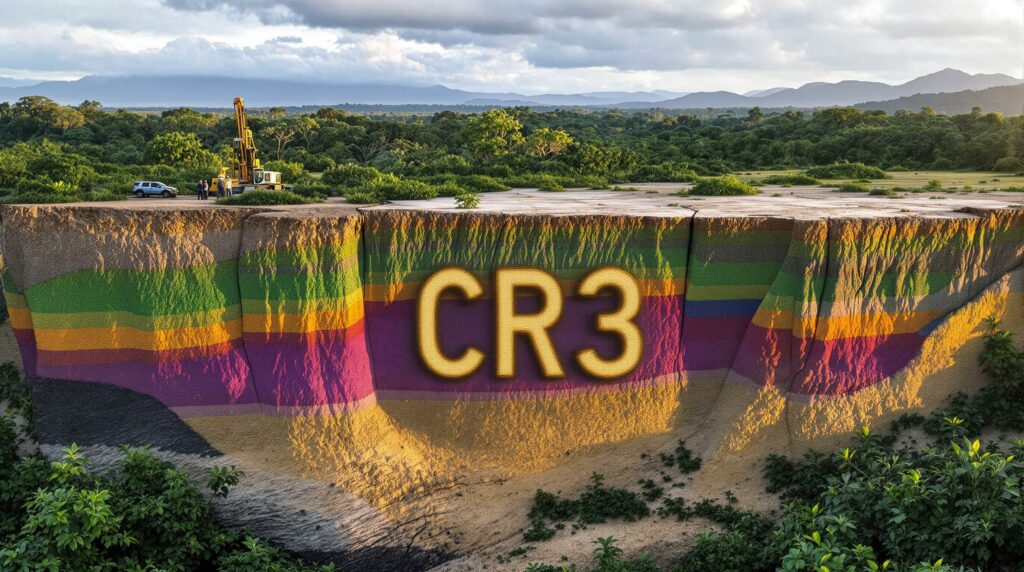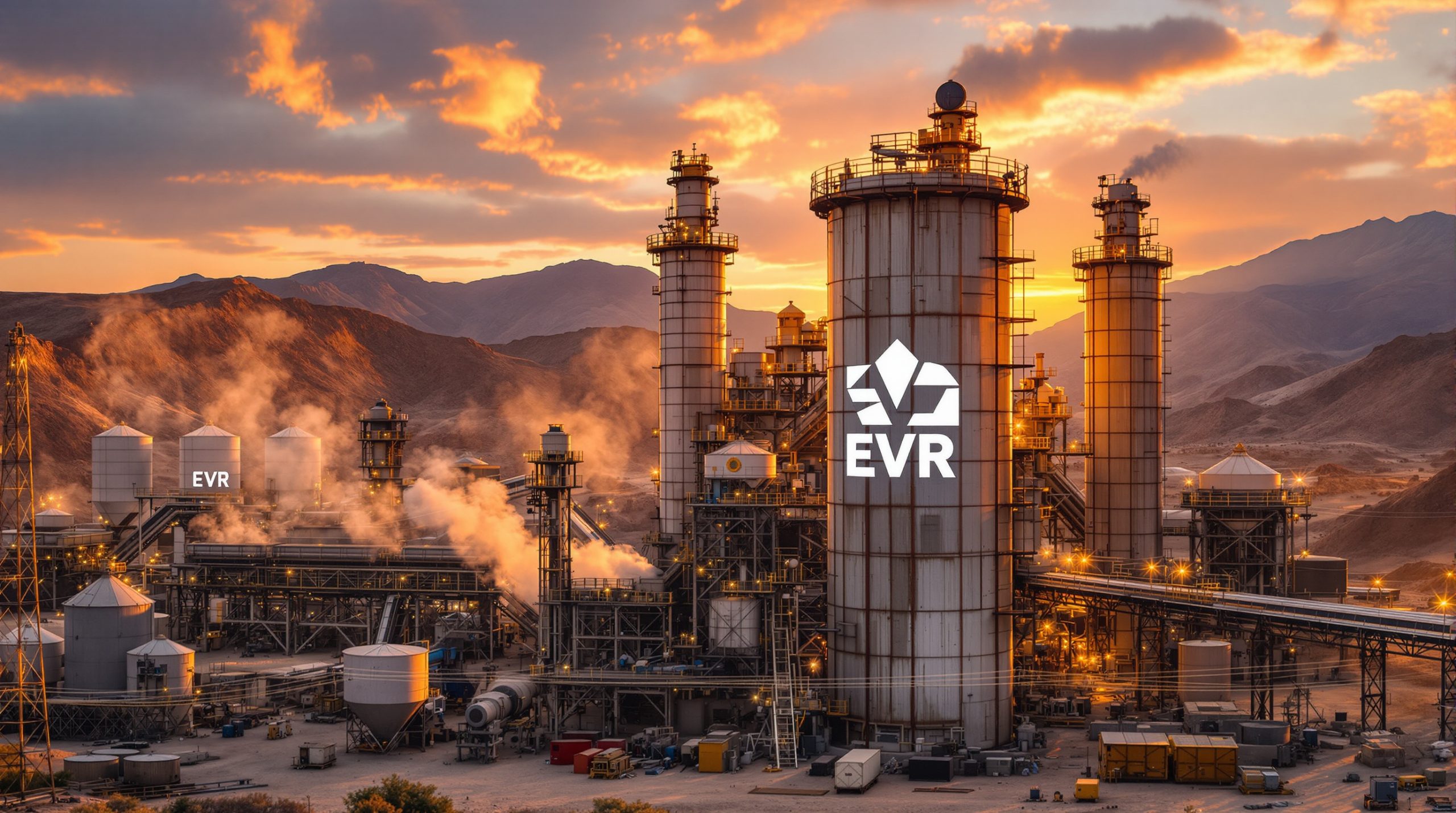Core Energy Uncovers Significant Rare Earth Elements at Brazilian Tunas Project
Core Energy Minerals (ASX:CR3) has announced impressive rare earth element (REE) discoveries from first-pass reconnaissance sampling at its Tunas Project in Brazil, with Total Rare Earth Oxide (TREO) assay results exceeding 2,000 ppm and peaking at 2,921 ppm in residual soils.
Promising Initial Results Point to Significant REE Potential
Initial sampling at the Tunas Project in Rio Grande do Sul has returned encouraging results that validate the project's REE potential. The discovery is particularly significant as it comes from surface sampling in deeply weathered residual soils.
Executive Director Tony Greenaway emphasized the importance of these findings: "These initial results from our Tunas Project in Southern Brazil are extremely encouraging. TREO results over 2,000 ppm and a peak of 2,915 ppm at surface in a deeply weathered soil profile, as we are seeing at Tunas, is a great first result."
Key highlights from the sampling program include:
- TREO assay results exceeding 2,000 ppm, with peak values reaching 2,921 ppm
- Favourable geophysical signatures typically associated with Brazilian REE deposits
- Widespread thorium > uranium – potassium anomaly coincident with the REE discoveries
- Well-developed residual regolith cover profile over enriched gneissic basement rocks
Strategic Location with Extensive Favourable Geology
The Tunas Project is strategically located near the township of Tunas do Paraná, just 75 km from Curitiba and 162 km from Paranaguá Port. The project surrounds the largest alkaline intrusive complex in Southern Brazil and covers an area of 18.32 km².
Significantly, the airborne radiometric data shows strong thorium > uranium – potassium signatures across 5.4 km² (or 68% of the southern tenement area), which is typically favourable for REE deposits. This signature is now understood to overlie an area of gneissic basement lithologies.
Understanding REE Deposits in Brazil
What are Ion Adsorption Clay REE Deposits?
Ion adsorption clay (IAC) deposits are a unique type of rare earth element resource formed when REEs leach from parent rocks during weathering and become adsorbed onto clay minerals in the resulting soil profile. These deposits are particularly valued because:
- They often contain higher proportions of valuable heavy rare earth elements (HREEs)
- They typically have lower concentrations of radioactive elements like thorium and uranium
- The REEs can be extracted using simple leaching techniques, reducing processing costs
In Brazil, these deposits typically form in tropical climates where intense weathering of REE-enriched granitic or gneissic rocks creates deep soil profiles. The thorium-potassium ratio in radiometric data is a key pathfinder for these deposits, which is why Core Energy Minerals' radiometric anomalies are particularly encouraging.
Immediate Next Steps: Systematic Auger Sampling Program
Core Energy Minerals isn't wasting any time following up on these promising results. The company has announced an immediate systematic auger drilling campaign designed to evaluate:
- The continuity of the identified REE mineralisation
- Grade distribution across the project area
- Vertical regolith thickness throughout the target zone
This program will help advance geological understanding and delineate specific target zones for future drilling campaigns. Furthermore, similar to Caspin's high-grade tin results at their Bygoo North Project, these early findings at Tunas show significant potential for resource definition.
Investment Thesis: Why Core Energy Minerals Deserves Attention
The Tunas Project presents several compelling reasons for investors to take notice:
-
Early-stage discovery potential: The initial results from limited sampling already show significant REE values, suggesting substantial upside as exploration progresses.
-
Strategic commodity focus: Rare earth elements are critical components in high-tech applications, renewable energy technologies, and defence systems, with growing global demand.
-
Favourable jurisdiction: Brazil offers a stable mining environment with established infrastructure and a history of successful mining operations.
-
Extensive land position: Core Energy Minerals controls 18.32 km² surrounding the largest alkaline intrusive complex in Southern Brazil, providing ample exploration upside.
-
Experienced management: The company's technical team has demonstrated geological expertise in identifying prospective REE targets. In addition, their approach resembles EcoGraf's environmental planning for critical minerals projects, ensuring responsible development.
Why Investors Should Follow Core Energy Minerals' Rare Earth Elements in Brazil
Core Energy Minerals' Tunas Project represents an early-stage opportunity in the rare earth elements sector, a critical component of the global transition to clean energy and advanced technologies. With initial surface samples already showing impressive TREO values and extensive radiometric anomalies confirming the favourable geological setting, the company is well-positioned to rapidly advance this promising project.
The immediate commencement of systematic auger sampling demonstrates management's commitment to quickly defining the project's potential. For investors seeking exposure to critical minerals in a stable jurisdiction, Core Energy Minerals offers a compelling opportunity at the discovery stage of the resource development cycle.
As the company works to define the extent and grade of REE mineralisation at Tunas, upcoming news flow from the auger program could serve as significant catalysts for the stock in the near term. However, investors should also be aware of other emerging opportunities in the critical minerals sector, such as uranium exploration in Namibia which presents another avenue for diversification.
The Global Importance of Rare Earth Elements
Rare earth elements comprise a group of 17 metallic elements that, despite their name, are relatively abundant in the Earth's crust. However, they rarely occur in concentrated deposits that are economically viable to extract. These elements possess unique properties that make them essential components in numerous high-technology applications.
The global rare earth elements market has experienced substantial growth due to increasing demand from various industries:
| Industry | REE Applications | Growth Drivers |
|---|---|---|
| Renewable Energy | Permanent magnets for wind turbines | Global shift to clean energy |
| Electronics | Components in smartphones, computers | Technological advancement and consumer demand |
| Electric Vehicles | Motors, batteries, catalytic converters | Transportation electrification |
| Defence | Guidance systems, communications | National security priorities |
| Healthcare | MRI machines, medical devices | Ageing populations and healthcare innovation |
This growing demand, coupled with supply chain concerns and concentrated production in certain regions, has led many countries to prioritise the development of alternative sources of rare earth elements. Core Energy Minerals' work in Brazil represents part of this global effort to diversify the supply of these critical materials.
With the potential to develop a significant rare earth elements project in Brazil, Core Energy Minerals is strategically positioned to benefit from these market dynamics. Consequently, the company's focus on systematic exploration and development of its Tunas Project could provide investors with exposure to this critical sector of the global economy. Similar approaches can be seen in companies like Greenvale Energy's uranium expansion and ZMI's massive untested anomaly exploration, reflecting the broader trend of developing critical mineral assets.
Want to Spot the Next Major Mineral Discovery Before the Market Does?
Discovery Alert's proprietary Discovery IQ model instantly identifies significant ASX mineral discoveries, transforming complex geological data into actionable investment insights for traders and investors alike. Discover why major mineral finds can lead to exceptional returns by exploring the historic discoveries on the Discovery Alert discoveries page.




